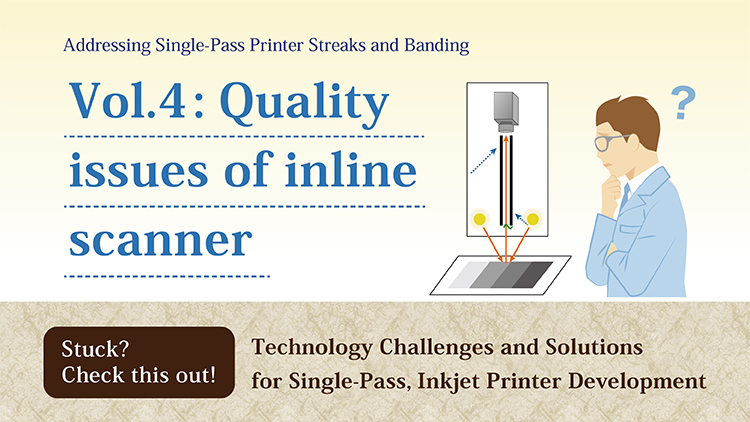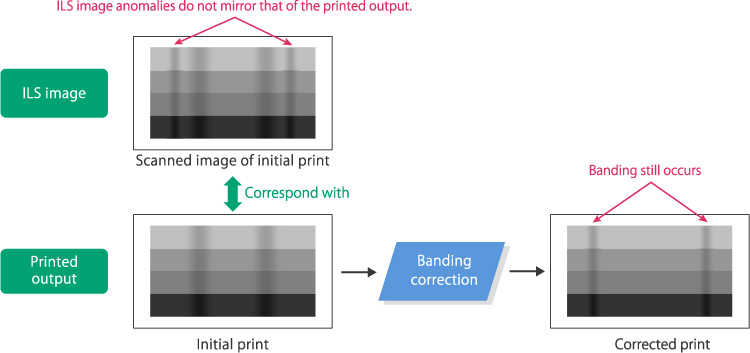
FUJIFILM SAMBA JPC® offers critical system components to integrators and OEM manufacturers of inkjet printing systems. Based on Fujifilm’s SAMBA® Printhead core technology, these include a set of modules that allow inkjet printing solution integrators to leverage Fujifilm’s experience in inkjet printer development, such as development of the FUJIFILM JET PRESS®, to facilitate development and compress their time to market.
Implementation of high-speed printing at high resolution, such as printing at 1200 x 1200 dpi, can create conditions where artifacts occur in the print output. Incorporating FUJIFILM SAMBA JPC® modules in the design of printing systems enables dynamic and active mitigation for some of these artifacts, including banding. Several types of banding can occur, so following a well-defined diagnosis path will support identification of the source and an optimal FUJIFILM SAMBA JPC® solution.
In high-resolution inkjet printing systems, an image inspection system is essential for preventing and correcting streaks and banding that result from anomalies related to printbar performance. As with other subsystems, the inspection system must be maintained to ensure it does not introduce anomalies due to inaccurate scanning which may result in undesirable printing artifacts. In this article, we will introduce a process to assess streaks and banding caused by inline scanners and offer potential remedies.
When banding occurs after image processing
Inline Scanning systems (ILS) are an integral part of modern printing solutions. They ensure print quality and consistency by sampling the printed output. Typical ILS systems capture images of the printed output as the machine prints. Vision software analyzes the captured images, detects the anomalies and provides the printer controller with information needed for corrective measures. However, at times, there are no apparent anomalies or artifacts attributable to printing issues, yet, banding or streaking occurs in unusual patterns. These may include:
- Streaks and banding that do not exist at the start of printing that emerge or increase in frequency during printing.
- The system does not seem to compensate for banding despite multiple attempts at image correction processes.
- Printing quality is not stable and consistent.
- The position and degree of banding varies.
In these situations, the ILS may be experiencing contamination from light or debris, so the first suggested remedy is to thoroughly inspect the scanning hardware and perform a cleaning routine to ensure that all surfaces are as clean as possible. If streaking or banding continues to appear, use the following further guidance to diagnose and correct.
Banding correction after normal imaging inspection
Typically, when the print anomalies are scanned the ILS image will reflect the exact match to the printed image. The banding correction methods will fully compensate for these anomalies, resulting in a corrected, high quality image:

Banding Correction for Abnormal Imaging Inspection
When the prints are scanned but the ILS image anomalies do not mirror that of the printed output there is a likelihood that the ILS scanner image path is obstructed. An obstruction may cause a faulty image read out and corresponding analysis.

If this is the case, you will need to take a closer look at the ILS image path to resolve the streaking or banding.






